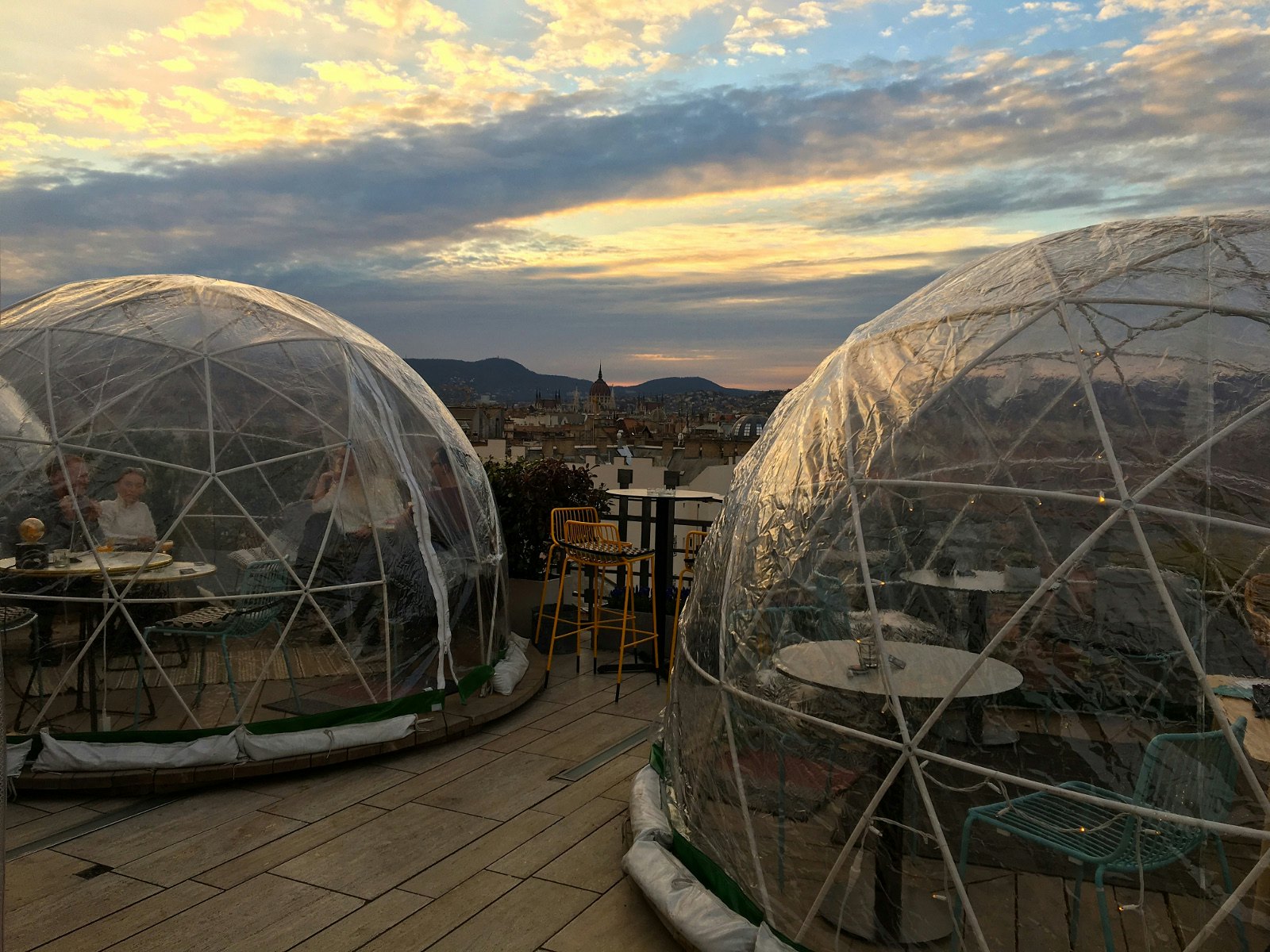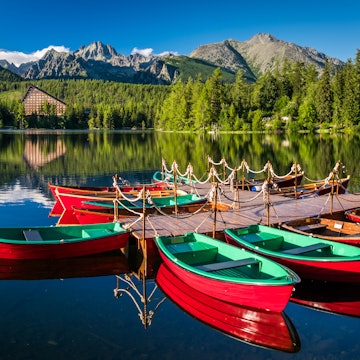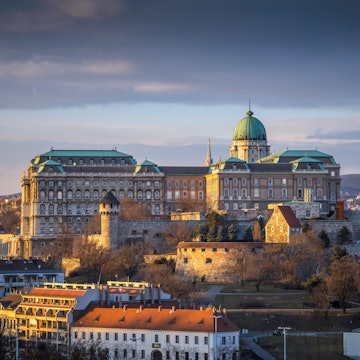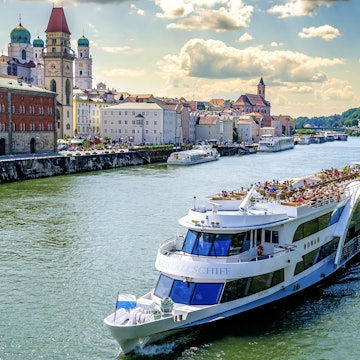

Budapest is one of the best destinations in Europe for a city break.
Stunning 19th-century facades around every corner, art nouveau marvels scattered along winding cobbled streets, historic monuments and grand museums, and opulent bathhouses where you can unwind and relax – it's no wonder that Budapest is renowned as a seriously romantic city.
But this air of beauty and romance doesn't mean it's stuffy; on the contrary, the nightlife is buzzing with energy and the party keeps going until the sun rises in ruin bars and courtyard concerts.
The Hungarian capital is one of Europe's most rewarding weekend breaks, with a compact center – spanning the two former cities of Buda (west of the River Danube) and Pest (east of the Danube) – that means most sights are within walking distance of each other. Unsure where to start? Here's our guide to spending a perfect weekend in Budapest.

Friday evening
A great way to kick off your weekend in the Hungarian capital is to get as high as you can. Budapest is magnificent when viewed from above, with the city's most postcard-pretty sights – such as the Royal Palace, the Basilica, and the ornate bridges that span the Danube – all squeezing into the same vista.
Take advantage of these views, which are extra beautiful when backed by an orange sunset, at one of Budapest's best rooftop bars; perennially popular 360 Bar is a good choice for those looking to party, while High Note is a top spot for an intimate evening. Be sure to book ahead!
If you're the active type – or don't want to start spending straight away – a great alternative is to climb up Gellért Hill to the Liberty Monument for the same views at no cost.

Saturday morning
For breakfast, grab a Hungarian pastry from any bakery – try a spiral-shaped kakaós csiga (chocolate snail), a favorite of locals. Having fuelled up, spend your morning exploring some of Budapest's prettiest sights on foot.
Start your journey from the iconic Chain Bridge, the first permanent crossing on the Danube, built in 1849. Take a glance at the impressive Four Seasons Gresham Palace on the Pest end, where all the A-list stars stay, then cross over to the Buda side and climb up to the Castle District. The vintage funicular – one of the oldest funicular railways in the world – whisks you up the hill in minutes (for a fee), but you can also hop on bus 16 or just hike up for free (it's not as far as it seems, we promise!).
Once there, cobble-stoned twisting streets lead you to the grand Buda Castle, razed and rebuilt numerous times through the ages, and the Hungarian National Gallery within, showcasing the history of Hungarian artistry from Renaissance stonework to striking 20th-century sculptures. It's certainly worth having a nose around. Nearby, the fairy-tale Fishermen's Bastion provides a dazzling view over Pest across the river.
For coffee and cake in the Castle District, be sure to stop by Ruszwurm, the longest-running confectionery in Hungary – even the cafe's counter is 200 years old. It's always busy, so avoid prime lunchtime for your best chance of getting seats. If you can squeeze it in, finish the morning exploring the fascinating Hospital in The Rock Nuclear Bunker Museum, a once-functioning hospital beneath the Buda Castle.

Saturday afternoon
From the Castle District, bus 16 takes you to Deák Ferenc Square, where a real highlight, St. Stephen's Basilica, is just a few steps away. Hiding inside is the country's most revered – and possibly eerie – religious relic, the embalmed right hand of Saint Stephen, the founding king of Hungary. A huge pipe organ is also on display and is brought to life during concerts you can experience for an extra charge. Clamber up 193 steps (or hop in the elevator) to the cathedral's dome for more panoramic views of the city.
Next, take a stroll down the city's showpiece avenue, Andrássy, which begins behind the Basilica. For this journey, you can pick up an ice cream skilfully made to resemble a rose from nearby Gelarto Rosa, or, for the more adventurous, sample Budapest's best lángos, a disc-shaped deep-fried dough topped with sour cream, garlic and cheese – an all-time favorite in Hungary. Grab one from the small stall (Retró Büfé) by the Arany János utca metro station.
Full of fancy shops, cafes, restaurants and beautiful buildings, Andrássy Avenue is Budapest's version of Paris's Champs-Élysées. You'll find the Hungarian State Opera House here and the harrowing House of Terror Museum, the former headquarters of the secret police, where victims of cruel regimes were once tortured. A visit makes for a deeply saddening but enlightening experience.
You can walk the tree-lined Andrássy Avenue – which is flanked with cafes should you still be peckish – all the way to Heroes' Square (though you can shorten the trip by hopping on the Millennium Underground, the oldest metro in continental Europe, which runs the whole length of Andrássy). The square is one of the city's most iconic monuments, paying homage to major figures from Hungarian history.
Saturday evening
Heroes' Square is the gateway to City Park, home to a rowboat-filled lake – which in the winter often turns into an alfresco ice-skating rink – and the stone Vajdahunyad Castle.
Have a stroll around the park to the world-famous Széchenyi Baths, where you can soak in muscle-melting healing thermal waters, enjoy saunas and massages or even attend a sparty. Budapest, of course, has many baths to choose from, and Széchenyi is often lumbered with the tag of "touristy," but with its contrasting colors of yellow walls and bright blue waters and wonderful outside pools, it remains one of the most atmospheric. Depending on your schedule, dedicate a good two to three hours here. After emerging from the spa, dinner awaits at the legendary Gundel Restaurant nearby, offering traditional Hungarian dishes with a modern twist.
When day turns into night, a visit to one of the city's ruin bars is essential. The highest concentration of these ramshackle spots, adorned with skip-found furniture and random knick-knacks, can be found in District VII. An essential stop-off is Fogas (Akácfa u. 51), a huge tree-filled complex with a courtyard, eight bars and an eclectic music choice. Many people come to Budapest solely for the nightlife, so get lost in it; bar hop, meet locals and try your hand at local pub games.

Sunday morning
Ease into Sunday like royalty with a leisurely breakfast at the New York Café, once chosen as the most beautiful coffeehouse in the world. Surrounded by gilded and marble surfaces, fragrant flowers, crimson colors, crystals, frescoes, chandeliers and often live Hungarian music, you can immerse yourself in authentic 19th-century coffeehouse culture.
Energy levels restored, hop on the nearby metro (M2) red line in the direction of Parliament – ideally with a quick stop off at Astoria to see the Great Synagogue, the second largest in the world.
One of Budapest's most iconic landmarks, the Parliament dominates the curve of the Danube and is home to the Holy Crown (used to crown the country's monarchs since the 12th century), as well as other royal jewels. English guided tours are available, but it's best to book ahead. Right by the Parliament, you'll find Budapest's most moving memorial, the Shoes on the Danube. This poignant monument remembers the victims of the Holocaust who were marched to the riverbank on a dark winter's day, ordered to remove their shoes and shot before falling into the fast-flowing river beneath.

Sunday afternoon
For one of the prettiest panoramas of Budapest, stroll along yellow Margaret Bridge next to the Parliament. Halfway across, you'll find the entrance to Margaret Island, the city's biggest green oasis. The whole island is a huge park in the middle of the city with a Medieval church ruin, a gorgeous Japanese Garden and century-old towering trees. Make sure you stick around for the centerpiece – the large fountain that lights up and "dances" to music every hour.
From the Pest-end of Margaret Bridge, take panoramic Tram 2 all the way along the river shore. Get off at Vigadó, where tourist boats with front-row seats to the city's most amazing landmarks await you. To finish on a high note, you can book a dinner cruise. (If you're on a budget, Budapest's public transport system also offers ferries that you can take for the price of a regular ticket.) The cruise should leave you on the Pest riverbank, where a final stroll along the Danube Corso is a great way to say goodbye to sparkling Budapest.














